Texas road trip: 10 things you absolutely must do in the historic city of Lubbock
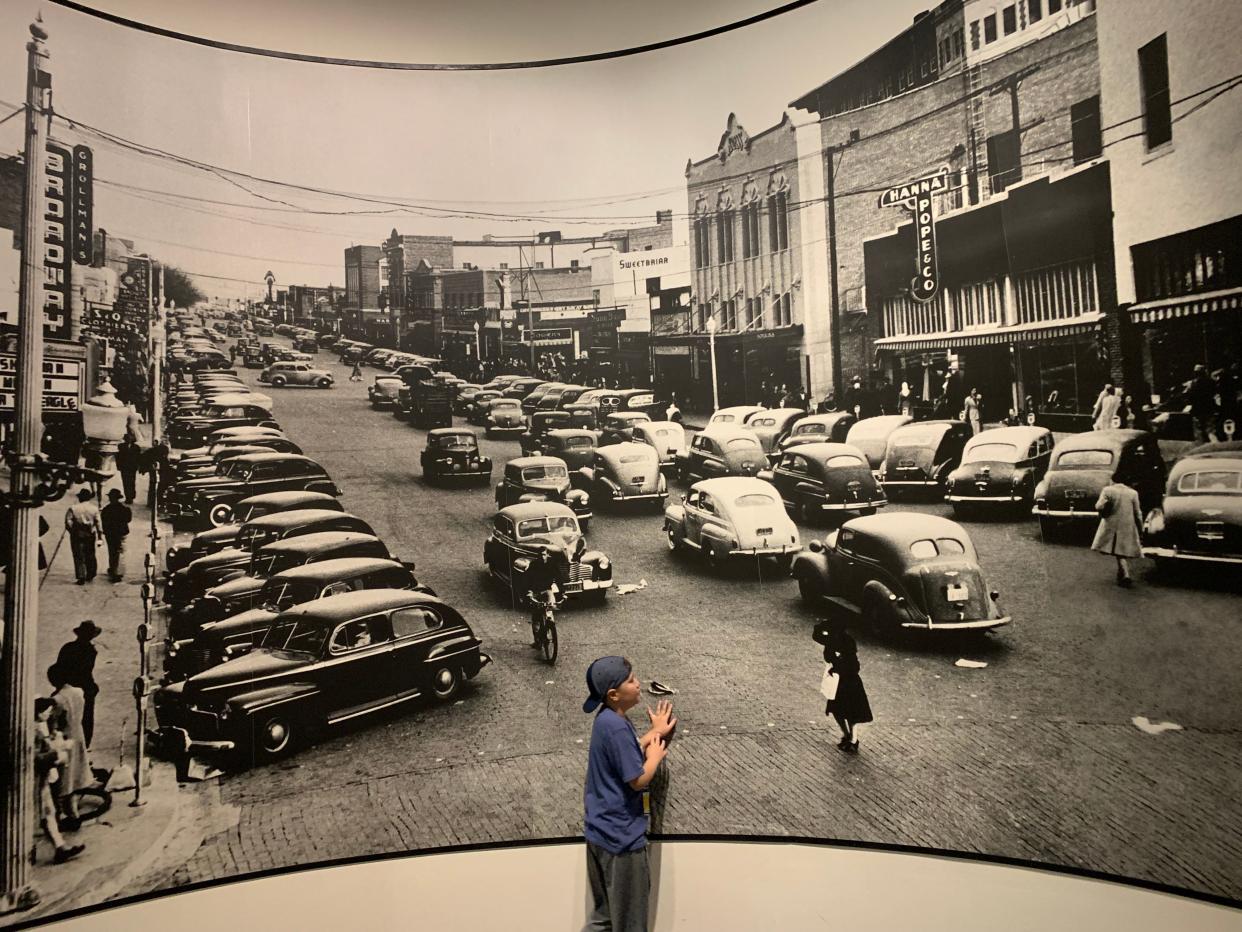
- Oops!Something went wrong.Please try again later.
LUBBOCK — The future of this historic West Texas city is limitless.
A recent glorious road trip to Lubbock convinced me that the Hub City will soon join the state's more recognizable tourist magnets, not because of its established blockbusters, such as Texas Tech University athletics, which have already spawned hundreds of handy hotel rooms.
But rather because visionaries and entrepreneurs are learning how to turn the city's ranching, farming and railroading heritage into a human-centric future that appeals to folks of varied ages, backgrounds and geographic origins.
Geographically, one certainly feels distanced from other parts of Texas out here. The sky is wide open and the horizon low on the Llano Estacado, a vast plateau that hangs 3,000 feet above sea level.
More: Here are 10 reasons why Corpus Christi is the most promising city in Texas
Distances can be deceptive.
When walking, a few short blocks on a map can turn into a real hike because of wide streets and sidewalks as well as infrequent landmarks or shade. At times, one can imagine being part of Spanish explorer Francisco Vázquez de Coronado's company wandering these same griddle-flat plains.
When driving, however, every target feels close, manageable. Even a barbecue run to the relatively distant suburb of Wolfforth was accomplished in mere minutes.
Because landmarks are scarce and low-slung districts flow into one another, Lubbock, a city of 250,000, can feel like a miniature Houston at times.
The city bears the scars of a segregated and unjust past. Yet the races and classes mix easily when large groups do assemble, which requires some prompting in such as widely spaced city.
My road trip buddies and I were startled, for instance, by the diverse, traffic-stopping crowds that streamed into a creative district on the northeast side of downtown for a First Friday fest of art shows, food trucks and live music.
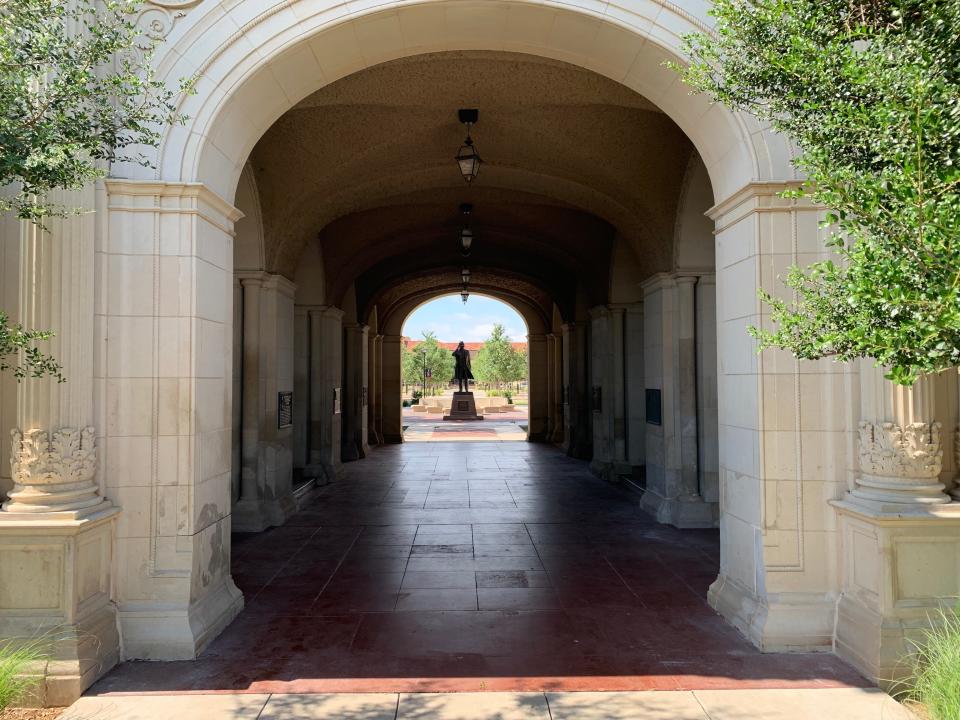
Bonus: The weather in the summer is more forgiving than in the eastern half of the state. Highs were at times 10 or 15 degrees cooler than in cities on the other side of Interstate 35, a useful boundary between East Texas and West Texas, even without factoring in Lubbock's blessedly low humidity and constant breezes.
In this weather, the broad, landscaped courtyard of our innovative downtown inn, Cotton Court, turned into truly populist resort spot, with all manner of guests relaxing in rocking chairs, stretching out on garden sofas, or wrapping up in hammocks while toddlers and pets milled around us.
More: On the West Texas road again: 10 must-see spots to visit in historic San Angelo
I've broken my Lubbock reporting — which depended on the invaluable advice of Brandi Addison, a dynamic reporter for the Lubbock Avalanche-Journal, another USA Today Network paper — into three parts:
This week: 10 sites you simply must visit in Lubbock
Next week: 10 places to wine and dine splendidly in Lubbock
Week following: The most amazing historical attraction in Lubbock
1. Lake Lubbock Landmark full of history, prehistory
No suspense here: The previously mentioned "most amazing historical attraction" is this active archaeological dig at lush springs that the Spanish called Punta de Agua. It has produced evidence of more than 12,000 years of human presence in the area.
I'll devote an entire column to the site that includes a well-designed museum and accompanying trails around the dig, once a Texas State Park, now part of Texas Tech. The extraordinary Landmark will soon celebrate its 50th anniversary.
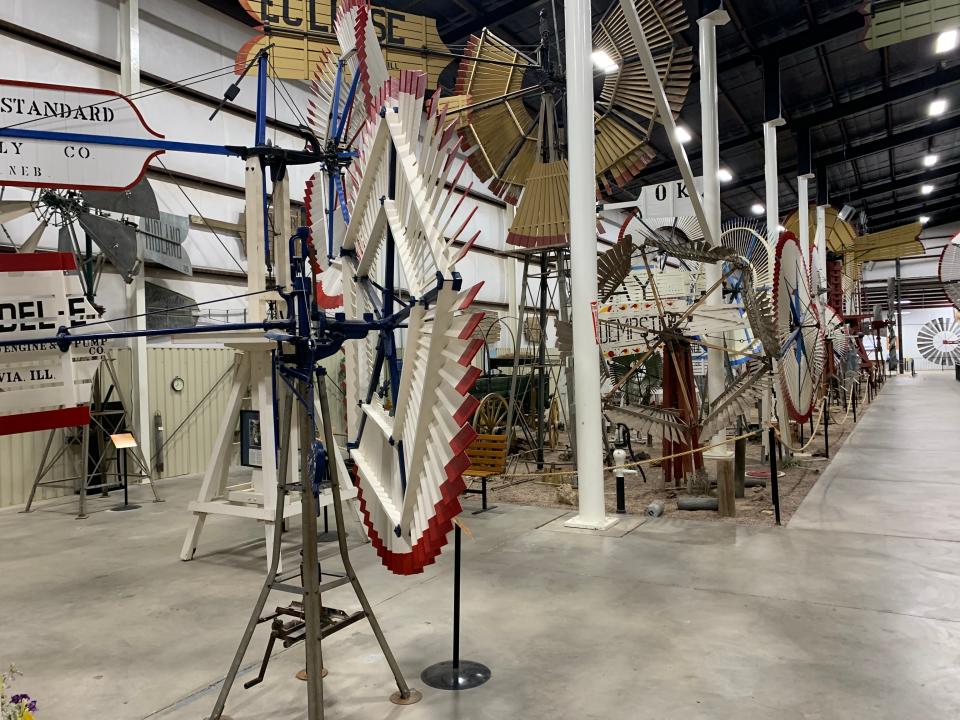
2. A spot unlike any other: American Windmill Museum
What would the South Plains be like without the windmills that once provided essential water for people, livestock and crops, and now produce enormous amounts of electricity through their science-fictional, wind-catching descendants?
More: When you go to Waco, and you should, visit these 10 tourist hotspots
Even today, Lubbock is one of the leading producers of cotton in the United States, which would have not have happened without these contraptions that provided early irrigation. A nonprofit group has built two large, red metal barns for their well-curated collection of windmills, as well as layouts for model trains built on several reduction scales.
More windmills await the visitor on the grounds of the hillside museum and a hypnotic display inside explains dozens of historical millstones. One thing is missing: An introductory exhibit on the history of windmills to give the nonspecialist some temporal context up front.
3. Strolling Texas Tech University's dignified campus
The historic core of the former Texas Technological College is among the most inviting in the state. It was founded 100 years ago in 1923 and the first class enrolled 914 students. In 1969, the state Legislature, under intense pressure from late Gov. Preston Smith, formally turned the college into Texas Tech University.
The Spanish Colonial style of the original buildings, raised on the featureless plains, has survived. A few rows of trees were planted along the walkways in the 1930s. Blessedly, more trees have been added since my last visit a couple of decades ago.
More: Indian Creek, Rowena and Ballinger: Discovering history gems in small West Texas towns
Parts of Tech's enormous football stadium echo this Spanish Colonial style. Perhaps because few nearby buildings compete with its gigantic scale, it appears even more imposing than it might otherwise.
A retail strip keyed to student customers and the nearby Overton residential hood resemble similar districts in other college towns. A New Urbanist addition of mid-rise apartments and hotels to the north of Overton proper has gone a long way to address density concerns, while providing walkable options for students, faculty and visitors.
4. Downtown Lubbock
For more than 100 years, this part of Texas was a central component of the Comanchería.
Soon after the Comanches were expelled, Lubbock County was created in 1876 and named after Tom S. Lubbock, a former Texas Ranger. The first settlement was Quaker Colony.
In 1890, Lubbock City was founded. Two settlements joined forces to make the new county seat of Lubbock, which was incorporated in 1909. At first, it was a frontier city, but blessed with some 20th-century amenities.
Downtown Lubbock is set out in a rigid grid with few trees or greenery. Many of its elements were improved by the Works Progress Administration during the Depression, and the federal government further boosted the city's fortunes by building Reese Air Force Base 10 miles west of Lubbock in 1941.
More: Texas history road trip rolls on: Brownwood is bigger than you think
It's tempting to compare Lubbock's central business district with those of recently visited Texas cities such as Corpus Christi, Waco and San Angelo. All were hollowed out by flight to the suburbs in the decades following World War II, and each is undergoing a renaissance.
Broadway, the main stem, still retains some of its historical assets. The towering Hotel Lubbock, later renamed the Pioneer Hotel, is now a home to luxury condos and excellent commercial ventures at street level. Federal, state and municipal buildings were put up in grand styles, but could use better links to surrounding streets. A new park on Broadway, already underway, should help green the street.
As previously mentioned, we stayed at the Cotton Court. (Disclosure: We accepted a modest media discount.) It put us in easy walking distance of several excellent restaurants, wineries, museums and Buddy Holly Hall, a soaring beauty of a performing arts center on Mac Davis Lane (Natives Davis and Holly are buried at the Lubbock City Cemetery, which also features a lovely angel by Texas sculptor Charles Umlauf.)
Like Waco, downtown Lubbock was hit by devastating tornado, this one an F5 on the Fujita scale that hit on May 11, 1970. Because of the extent of the disaster, scientists recalculated the Fujita scale. One can visit a somber memorial to the storm victims on Avenue Q.
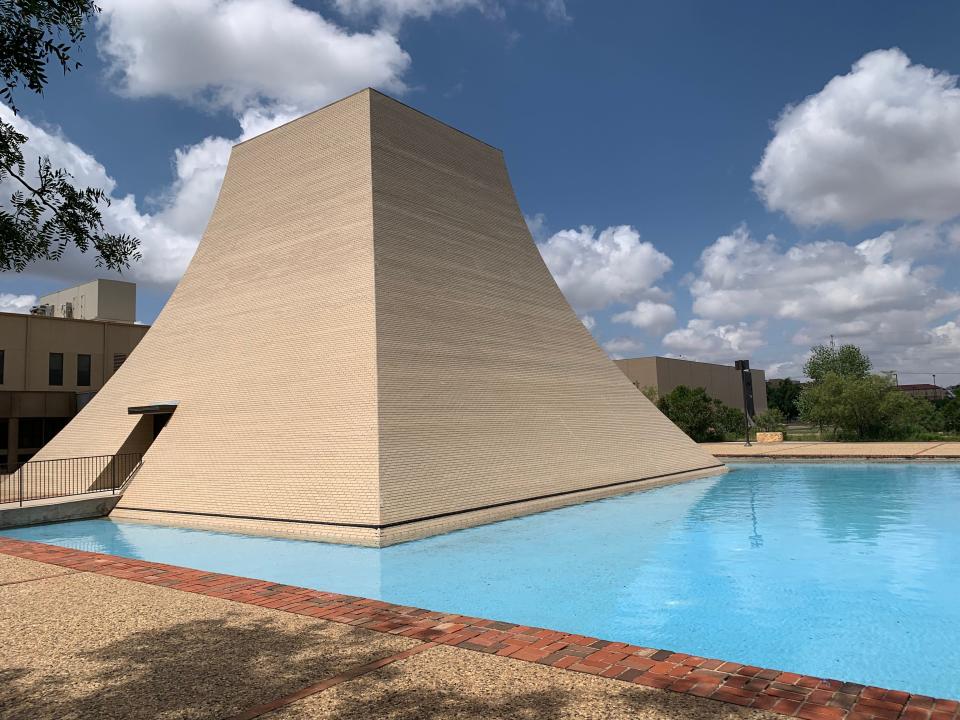
5. Buddy Holly Center
For a professional music career that lasted only 18 months, Buddy Holly's proved incredibly memorable and influential. Born into a musical family, Holly could handle his brother's guitar at an early age and moved fluently from country and bluegrass into rock 'n' roll, which he helped define for wider audiences through "That'll Be the Day," "Peggy Sue" and other hits.
A permanent exhibit at the Buddy Holly Center, a former railroad depot, tightly documents his life and career. Well-curated displays make clear that major artists from the Beatles to Bob Dylan and the Rolling Stones acknowledged Holly's direct impact other their work. Another display painstakingly traces the sources for rock 'n' roll through the blues, country and other genres.
More: Visiting shrines, missions, presidios, vaults and other hallowed places in South Texas
Holly died in a plane crash after an Iowa concert on Feb. 3, 1959. A statue of Holly rises across the street from the center, backed by plaques that make up the city's West Texas Walk of Fame.
6. First Friday that works
Many communities around the country schedule free monthly festivals that offer arts and/or crafts along with food, drink and entertainment. These merry events are really mostly about socializing, and they are great tools for bringing out crowds.
In Lubbock, trolleys shuttle the guests around different parts of downtown. Yet the main action seems to be around the few blocks just east of Buddy Holly Hall, home to the Louise Hopkins Underwood Center for the Arts, as well as several studios, galleries and markets. Prominent among them is the Charles Adams Gallery, dedicated to West Texas art.
7. Stubb's Memorial and the legacies of East Lubbock
Among the most haunting sites in this city is a cluster of giant, decaying industrial structures that once processed cottonseed oil in East Lubbock. Nearby, off Avenue A, we stumbled on a Texas historical marker dedicated to Lubbock's first cotton gin built in 1903.
Although ranching culture predated it, cotton really made Lubbock. The arrival of the Santa Fe Railroad in 1909 meant the cotton grown on these fertile plains could be shipped all over the country.
More: 'And Still We Rise': Exhibit at Galveston's new Juneteenth museum tells powerful history
Along with the cotton came more African American and Mexican American workers, once segregated in neighborhoods around the industrial works of East Lubbock.
A revered site on East Broadway is the Stubb's Bar-B-Que Memorial, a pocket park where Christopher B. "Stubb" Stubblefield Sr. sold superior barbecue and hosted many of the musical greats of Lubbock and beyond. In 1986, Stubb moved to Austin, but a statue in the tiny park salutes his bountiful West Texas nature.
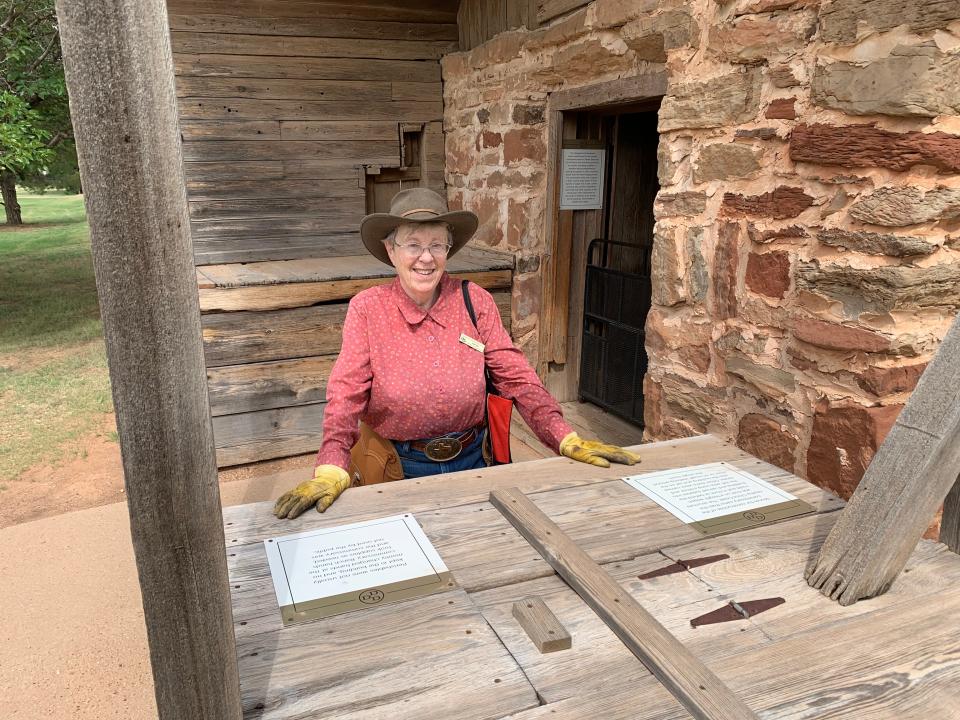
8. Pioneer life at the National Ranching Heritage Center
Look around the lobby of the handsome museum at this center and you might feel disoriented. Among the offices, meeting rooms and classrooms, only a few historical galleries celebrate the great cattle kingdoms of Texas; two of those rooms were being rearranged at the time of our visit.
Yet follow the maps provided at the entrance to the marvelous grounds behind the building on the Texas Tech north campus. You meander around hills, trees and native plantings to view some two dozen pioneer structures — from dugouts and barn to a Queen Anne mansion — transferred here and carefully outfitted with furnishings and decor of the day.
More: Texas History: What makes Stephenville a 'Cowboy Capital of the World'
Hearty guide Patricia Herman told us that the hills were made from tornado rubble, which lent this grouping of moved historical buildings — maybe the best I've ever seen — even more meaning.
9. Into the Museum of Texas Tech University
This is a museum of everything— art, sports, natural history, local history, anthropology, paleontology, photography, you name it. We entered the brick building through a side door across the plaza from the Ranching Heritage Center, so we had no idea about this museum's mammoth scale.
It goes on and on and on: Currently, expert displays on nature photography, Texas Tech history, Native American art, regional wildlife, sports heroes, prehistoric antiquities. I was particularly drawn to an exhibit on recent imaginative art drawn from existing cultural practices.
More: Texas history: Bandera is a cowboy country unto itself
This is the kind of a museum that can draw families year round, because its exhibits are always changing and evolving.
10. Ransom Canyon and the Upper Brazos
At one point during our road trip, I realized that three major Texas universities — Texas Tech, Baylor and Texas A&M — are more or less located on the Brazos River.
By accident, a previous trip delivered a buddy and me to the former ranch land around Cañon de Rescate, now known as Ransom Canyon, a green oasis on the Double Mountain Fork of the Brazos River. I returned there on the way out of town.
More: Texas River Tracing: Forks of the Brazos
"Spanish explorers crossed this canyon, part of the larger Yellow House Canyon, perhaps as early as the 1540s," reads the spot's Texas Historical Marker. "Jumano, Apache and Comanche Indians camped here to take advantage of the canyon's protective walls, fresh water springs, trees and abundant game.
"In the late 1700s, New Mexican traders known as Comancheros began to exchange agricultural and craft products of their villages for buffalo hides, horses and other items of the Plains Indians along a trade route which passed through this canyon," the marker's text continues. "In the 1800s, a number of captives were brought here by Comanche Indians and sold to Comancheros.
"The Comanchero practice of demanding ransom for their release gave rise to the canyon's name."
Michael Barnes writes about the people, places, culture and history of Austin and Texas. He can be reached at mbarnes@gannett.com. Sign up for the free weekly digital newsletter, Think, Texas, at statesman.com/newsletters, or at the newsletter page of your USA Today paper.
This article originally appeared on Austin American-Statesman: From Texas Tech, to museums: Lubbock is a must road trip destination

